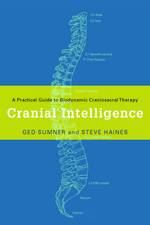 Richard Bertschinger is a practising acupuncturist, teacher of Chinese healing arts, and translator of ancient Chinese texts.
Richard Bertschinger is a practising acupuncturist, teacher of Chinese healing arts, and translator of ancient Chinese texts.
Here he answers some questions about his new book, The Secret of Everlasting Life: The First Translation of the Ancient Chinese Text on Immortality.
How did you get interested in this work?
I’m now 62 and have been doing qigong some forty years. My interest goes back to when my teacher Giafu Feng (translator of the Tao-te Ching with Jane English) pointed out the early alchemical poems of China, and I soon found out that the Can Dong Qi, which I entitle The Secret of Everlasting Life was not only the oldest, but also the most revered, and the ‘grand-daddy’, as I call it, of them all. Also, it had never been translated, except as a chemical treatise – which was obviously getting hold of the wrong end of the stick!
What is special about these texts?
They have been enormously studied in China. I list 69 separate editions of the Can Dong Qi at the end of my translation. Not all of which I have consulted, I have to say! However during the 80’s I had the good fortune to study in Chengdu, Sichuan in China, with a very special qigong teacher. And I was fortunate to return to England with an excellent edition of this work, the requisite dictionaries and some sensitive instruction, all under my belt. I think I knew then it would take probably 30 years to complete
The obvious next step was to teach myself to read these texts. Nobody else had attempted a complete translation. And I had learnt from Gia-fu that the best way was to study the Chinese commentators on the work. (We had worked together on the I Ching, or Book of Changes, at that point). So I literally started page one, character one and went from there. At the same time I continued my acupuncture, tai-chi and qigong training – teaching as well. And I found this happy mix very conducive. I had voluminous notes (I can write very fast!) from China and my time with Gia-fu. And somehow the work got born.
I have to say that I wrote to Professor Joseph Needham about the work, and sent a sample – and was fortunate enough to get a letter back encouraging me to continue in my work. He especially like the fact that I had made the translation into English in short, poetic lines – thereby copying the Chinese text. I was most keen to be as faithful to the original as possible, you see.
What is the book’s message?
Well the book itself teaches a method of meditation which is well-known – and often, nowadays, termed ‘qigong.’ It makes much of the cultivation of stillness in body and mind. Reader, you probably have yourself felt those precious moments of quiet in your life, no? I think we all come across them. As if an angel crossed our path. Perhaps facing a beautiful sunset, a special moment with a friend, or the satisfaction of completing, in its own time, a piece of work. The genius of the Chinese sages was that they found a method, a technique akin to Indian Yoga, by which this experience could be cultivated, taught and developed. Of course, all this is now being verified by modern research, brain imaging and such like, and work on neuro-transmitters; the benefits of regular pratice of qigong are at last being recognised. Wei Boyang himself talks in these poems about “grasping onto the quiet and solitude, those rare times, so tranquil and still.” He lived the life of the scholar-hermit-alchemist so popular in the Taoist tradition. It is all to do with finding out what our common humanity is about. Very Chinese, you know.
So, what is the secret of everlasting life?
Well I suppose it is embracing this method, in its rawest aspect, coaxing internal physiological transformation, revelation and philosophical enlightenment. Yuyan (one of the Chinese commentators) describes it as a method of inner development which shows “all people their ability to reflect back their brightness to light up within (huiguang neizhao), so that their out-breath and in-breath then merge together into a state of utmost peace.” I think that about says it all! (Big Laugh!)
Copyright © Jessica Kingsley Publishers 2010.

 James Drewe
James Drewe



 Master Wu has devoted himself to the study of Qigong, martial arts, Chinese medicine, Yijing science, Chinese calligraphy, and ancient chinese music for over 30 years. He was Director of the Shaanxi Province Association for Somatic Science and the Shaanxi Association for the Research of Daoist Nourishing Life Practices, and has written five books and numerous articles on the philosophical and historical foundations of China’s ancient life sciences. Visit
Master Wu has devoted himself to the study of Qigong, martial arts, Chinese medicine, Yijing science, Chinese calligraphy, and ancient chinese music for over 30 years. He was Director of the Shaanxi Province Association for Somatic Science and the Shaanxi Association for the Research of Daoist Nourishing Life Practices, and has written five books and numerous articles on the philosophical and historical foundations of China’s ancient life sciences. Visit 